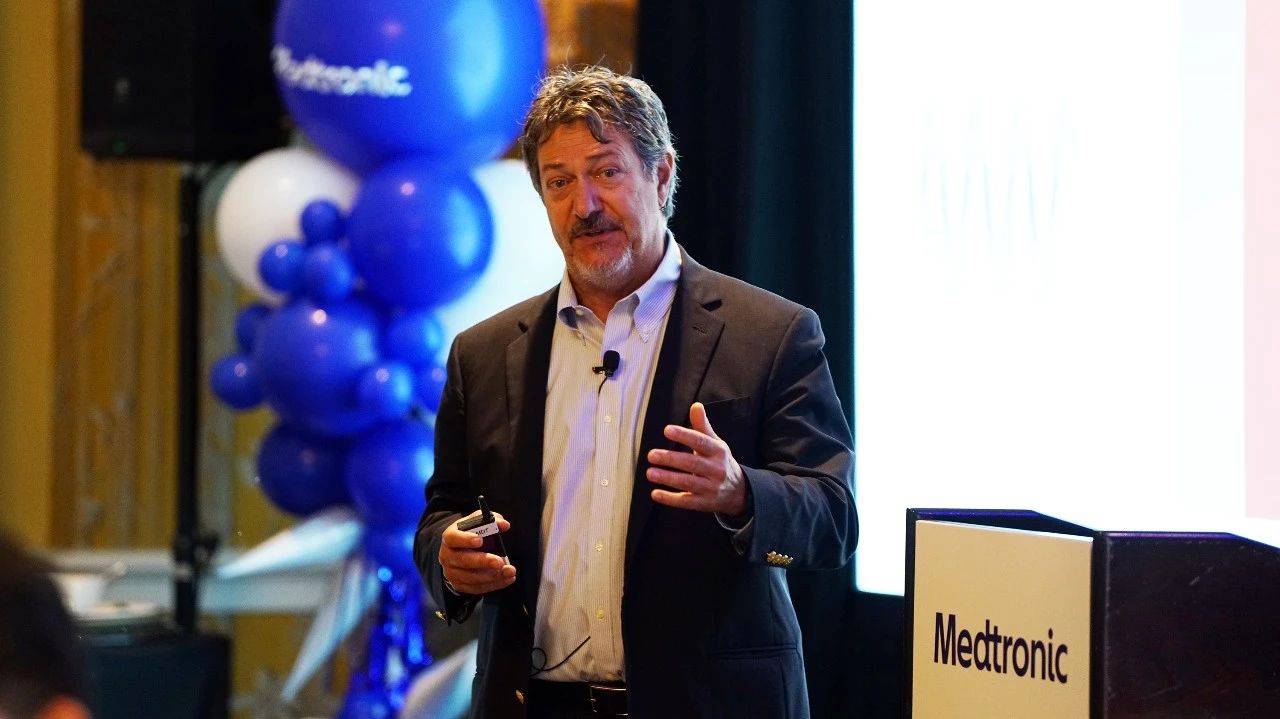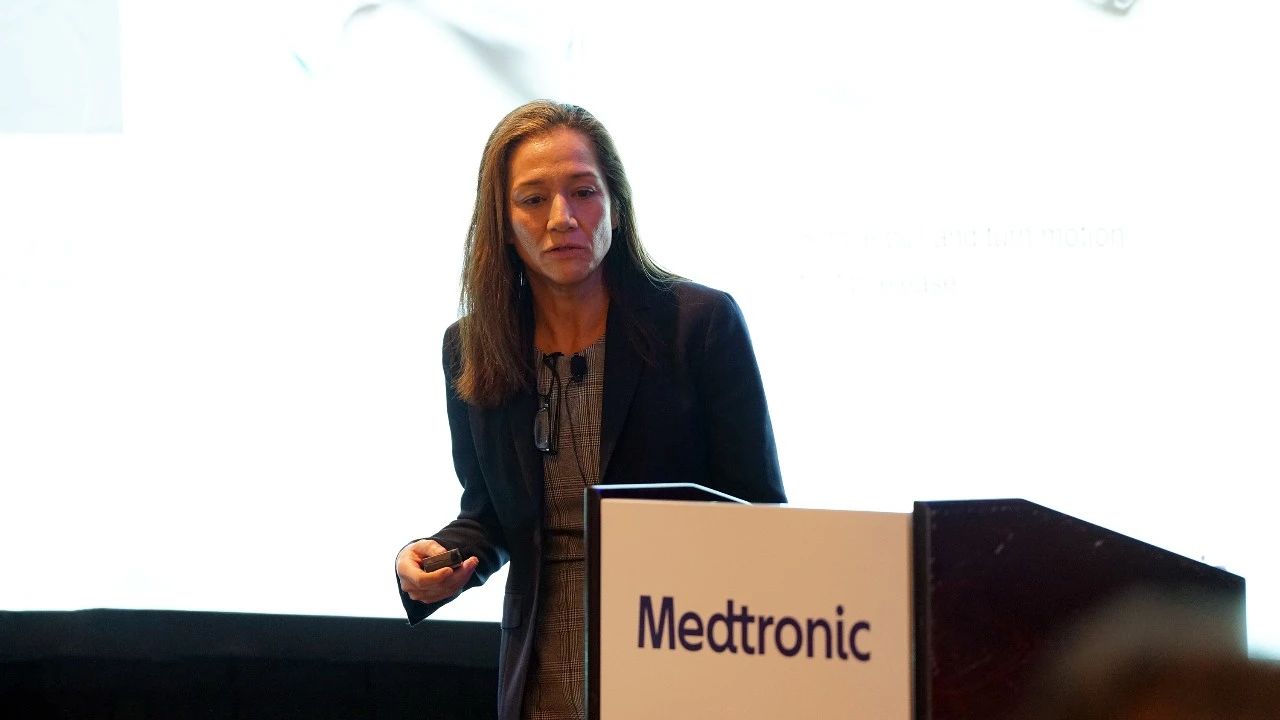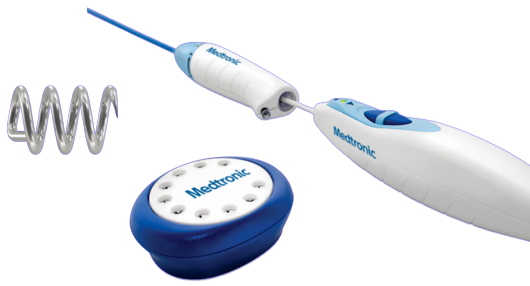Poor aortic arch sealing increases the risk of TEVAR procedure failure. Challenging TEVAR stents present with inadequate sealing, particularly in the proximal landing zone, and are associated with a risk of late complications such as stent collapse, type I endoleak, and stent migration. On November 16, 2023, during the International Conference on Vascular and Endovascular Angiology (VEITH symposium) held at the Hilton Hotel in New York Center, USA, the satellite meeting "How to Optimize Sealing in Challenging TEVAR" held by Medtronic attracted the attention of many experts and scholars. Professor Shu Chang of Fuwai Hospital, CAMS shared his views on the topic of "How to optimize sealing in challenging TEVAR". Poor aortic arch sealing increases the risk of TEVAR procedure failure. Challenging TEVAR stents present with inadequate sealing, particularly in the proximal landing zone, and are associated with a risk of late complications such as stent collapse, type I endoleak, and stent migration. On November 16, 2023, during the International Conference on Vascular and Endovascular Angiology (VEITH symposium) held at the Hilton Hotel in New York Center, USA, the satellite meeting "How to Optimize Sealing in Challenging TEVAR" held by Medtronic attracted the attention of many experts and scholars. Professor Shu Chang of Fuwai Hospital, CAMS shared his views on the topic of "How to optimize sealing in challenging TEVAR".
Expert Interview

Chang SHU
Fuwai Hospital CAMS & PUMC
Clinically, the anatomical morphology of the aortic arch is ever-changing and is the root cause of great challenges faced in endovascular repair of the aortic arch (TEVAR), and poor sealing of the aortic arch increases the risk of TEVAR surgical failure. If there is inadequate stent sealing during the operation, it can lead to complications including type IA endoleak, beak phenomenon and other complications requiring reintervention. Therefore, how to adapt to different types of aortic arch from anatomical morphology and hydrodynamics is an urgent problem to be solved by stent manufacturers.
Because of its unique design features, the Valiant Captivia Stent offers the advantage of "optimized sealing" in TEVAR:
1, its unique 8-peak mechanical design, compared with other stents with only 4/6 peaks, has great advantages in apposition to the proximal aortic arch arterial wall and can effectively avoid endoleak and beak.
2, the post-release technique is important for accurate positioning. Because the anatomical structure of aortic arch is various, it is very easy to produce position deviation when the stent is released before taking the stent, and further adjustment of alignment is required subsequently, which not only affects the release accuracy, but also increases the risk of complications. Posterior release technology facilitates precise positioning and release, with better stent apposition to the aorta.
3, the aortic arch has a large blood flow velocity, high blood pressure, and the stent is prone to displacement. Valiant Captivia is made of a highly flexible nitinol with a proximal support ring that provides active radial support while maintaining close apposition to the aortic wall, ensuring durable anchoring and sealing, which results in excellent stability and apposition. After the stent is released, there are no worries.
In some specific cases there remains a high risk of stent related complications such as endoleak and migration due to the complex anatomy of the aortic arch. Medtronic has a product, Heli-FX EndoAnchor, which is a new solution to this problem, and Heli-FX can strengthen the seal between the stent and the autologous artery and prevent and treat complications associated with poor seal. At the same time, we hope this product can be introduced into China as soon as possible and benefit more Chinese patients.
Jean M. Panneton:EndoAnchor Sealing in TEVAR

EndoAnchor provides fixation and sealing between an endovascular aortic stent graft and the native artery and is indicated in patients with complications such as stent migration or endoleak in the artery. EndoAnchor can be used during the first stent implantation or repair and is divided into two steps: recapture and release. Medtronic provides two independent fixation systems for the abdominal and thoracic aorta: the Heli-FX EndoAnchor System and the Heli-FX Thoracic EndoAnchor System. EndoAnchor is indicated for saccular aneurysms, penetrating aortic ulcers (PAU), and blunt thoracic aortic injury (BTAI) for the prevention of severe angulation, unfavorable neck conditions, anchoring difficulties, and lesions at risk of follow-up; and for the treatment of identified stent migration, type I endoleak, beaking. Aortic dissection, IMH, connective tissue disease, aortic thrombosis, annular calcification, and fragile arteries are contraindications to EndoAnchor.
A retrospective, single-center analysis of Heli-FX EndoAnchor [1] included 54 patients (40 abdominal aortic aneurysms; 14 thoracic aortic aneurysms) who received EndoAnchor between December 2012 and January 2016. EndoAnchor was used for treatment and prophylaxis indications, 27 for the first procedure and 27 for reoperation. The mean age of the patients was 69.4 ± 13.3 years and 35.2% were female. The mean follow-up time was 9.6 ± 8.8 months. EndoAnchor was used for therapeutic indications in 31.5% of patients and for prophylactic indications in 68.5%. Technical success was 99.8%, and the overall initial technical success of the procedure was 98.1% without stent migration. Overall endoleak rates were 5.4% with prophylactic use and 11.8% with therapeutic use. Only one reintervention was performed due to failure of EndoAnchor.
Professor Jean M. Panneton presented his top ten reflections on the use of Endoanchor in EVAR and TEVAR in his presentation:
(1)Careful preoperative planning;
(2)You can 't think too optimistic about the anchor zone;
(3)Accurate delivery of Endoanchor;
(4)Balloon aortic angioplasty first;
(5)Adjust Heli-FX size according to vessel diameter;
(6)Reduce the size of Heli-FXT according to the greater curvature of aortic arch;
(7)Place 2-row Endoanchor in EVAR and TEVAR;
(8)Place at least 3 rows of Endoanchor on the arch;
(9)EndoAnchor was implanted in the distal thoracic aorta to tapering abdominal aorta;
(10)Do not start challenging TEVAR/EVAR without EndoAnchor.
In summary, therapeutic and prophylactic use of the EndoAnchor implant in TEVAR/EVAR has the potential to improve the efficacy and durability of intrathoracic grafts. EndoAnchor can be safely used in thoracoabdominal endovascular aneurysm repair with a high technical success rate and a low incidence of endoleaks. More studies are needed in the future to provide long-term data to further define the use of this technique in the thoracic aorta.
Megan C.Tracci:Optimal handling of LSA

To achieve proximal aortic seal, coverage of the LSA is required in 26% to 40% of TEVAR cases, however LSA affects left upper extremity and left vertebral artery perfusion, and extending the landing zone must be balanced with increasing the need for revascularization procedures.
For the necessity of LSA reconstruction, the SVS practice compass recommends management of LSA in thoracic endovascular aortic repair: Although the quality of evidence is low, preoperative LSA reconstruction is recommended for patients who require LSA coverage in TEVAR. Especially in patients with compromised collateral circulation, preoperative reconstruction of the LSA is strongly recommended (2). A systematic review of 63 studies with more than 3,000 patients concluded that intraoperative coverage of LSA increases the risk of stroke after TEVAR, while LSA revascularization reduces the risk of stroke. LSA revascularization reduces the incidence of posterior circulation stroke. Aneurysmal TEVAR is associated with an increased risk of stroke compared with dissecting TEVAR (3).
To determine the effect of dealing with LSA on neurological complications following TEVAR and to identify possible benefits from LSA revascularization. The Medtronic Thoracic Endovascular Aortic Repair Registry (MOTHER) [4] included data from five sponsored studies and an institutional series that identified 1,010 patients who underwent TEVAR between 2002 and 2010, described the incidence of perioperative stroke and spinal cord injury (SCI) according to the management of LSA and clinical pathology, and used multivariate analysis to identify factors associated with perioperative neurological complications. Of the 1,002 patients finally included in the analysis, the incidence of stroke was 2.2% in patients without LSA coverage, 9.1% in patients with LSA coverage, and 5.1% in patients who had undergone LSA revascularization before coverage (P < 0.001). The MOTHER study showed that coverage of LSA without revascularization was an important modifiable risk factor for stroke in TAAA patients treated with TEVAR. Pre-revascularization prevented stroke in the posterior circulation territory.
LSA revascularization techniques are diverse and include surgical techniques such as bypass grafting and transposition, as well as endovascular techniques such as chimney technique, fenestration technique, and branch stent technique. To compare perioperative outcomes of open repair with endovascular reconstruction of LSA: For all nontraumatic thoracic aortic diseases, reconstruction of LSA with open bypass/transport or endovascular intervention during TEVAR is safe and effective. In selected patients, these techniques have similar perioperative outcomes and low rates of mortality and major neurological complications [5].
Hands on instruments can play a better role in endoluminal LSA reconstruction. Fenestration is one of the techniques for endoluminal LSA reconstruction, and Valiant Captivia has advantages in fenestration due to its unique design features:
(1)Wide frame clearance, no connecting rod, more flexibility and availability, less interference with fenestration position;
(2)The proximal rear release device has a large gap, which facilitates the entry and exit of guide wire, catheter and long sheath;
(3)The stent comes with a figure-of-eight mark mark with clearer orientation, which can more clearly confirm the clock position of the large stent and reduce unnecessary rotation adjustment during stent release;
(4)The outer diameter of conveyor is 22 ~ 24F, which is thinner than other types of stents and does not require a separate sheath.
Summary
Poor aortic arch sealing increases the risk of TEVAR procedure failure. Because of its unique design features, Valiant Captivia maintains a close fit to the aortic wall and ensures durable anchoring and sealing, resulting in excellent stability and apposition. The risk of inadequate sealing with conventional TEVAR procedures is higher when faced with partially challenging anatomical conditions. Heli-FX EndoAnchor is a new solution to this problem by enhancing the seal between the stent and the native artery and preventing and treating the risk of stent related complications such as endoleak and migration.

References
[1] J cardiovasc surg(Torino). 2016 Oct; 57(5):716-29.
[2] Matsumura JS, Lee WA, Mitchell RS, et al. J Vasc Surg. 2009 Nov;50(5):1155-8.
[3] Waterford SD, Chou D, Bombien R, et al. Ann Thorac Surg. 2016 Jan;101(1):381-9.
[4] Patterson BO, Holt PJ, Nienaber C, et al. J Vasc Surg. 2014 Dec;60(6):1491-7.e1.
[5] D'Oria M, Kärkkäinen JM, Tenorio ER, et al. Ann Vasc Surg. 2020 Nov;69:17-26.


